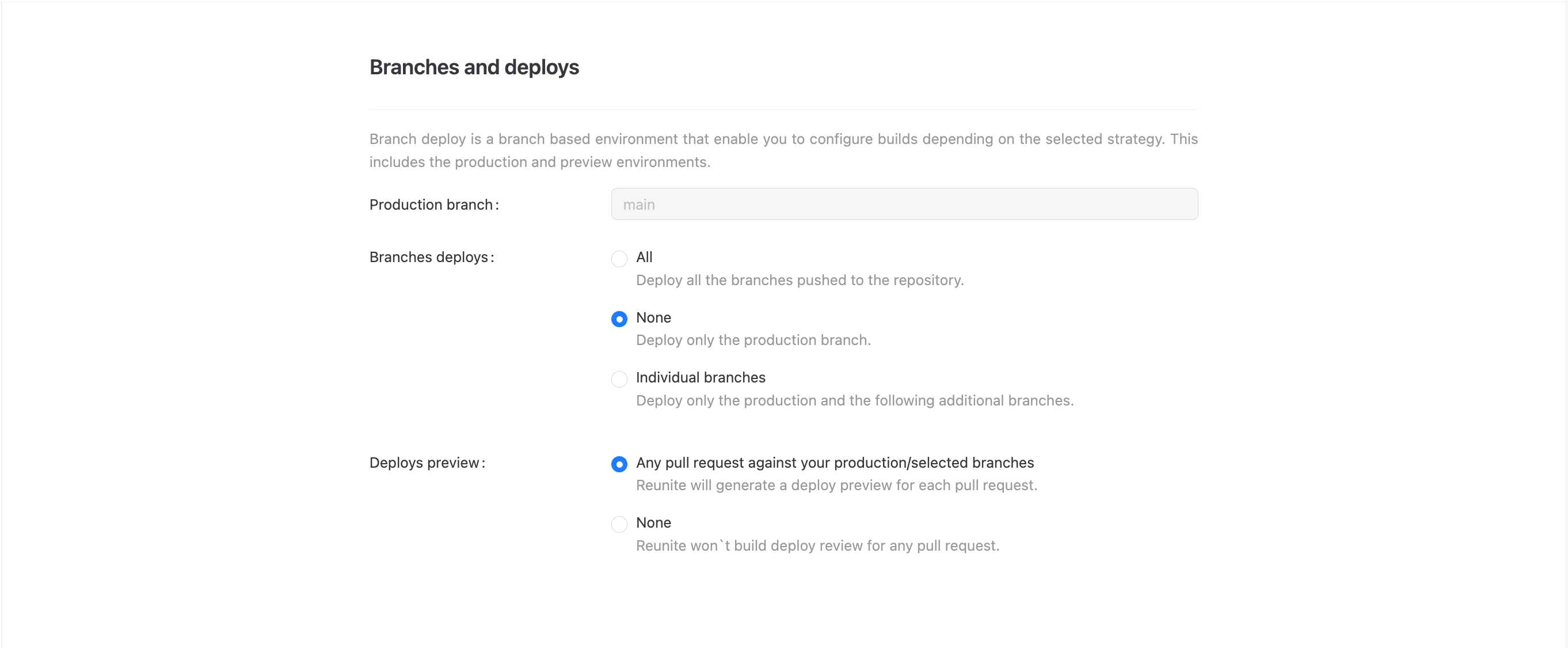In the Branches and deploys configuration, you can control which branches Reunite deploys and how it handles preview deployments for your project. This configuration gives you precise control over your deployment strategy, allowing you to balance development workflow needs with resource management.

The Production branch setting defines your main branch (typically main) that triggers production deployments when changes are merged. This is the branch that represents your live, published content.
For Branches deploys, you have three options to control which branches are deployed:
- All: Deploys every branch pushed to your repository
- None: Deploys only the production branch
- Individual branches: Lets you specify additional branches alongside production for deployment
The Deploy preview setting determines whether Reunite generates preview deployments for pull requests:
- Any pull request: Enables previews for pull requests against your selected branches, allowing you to review changes before merging
- None: Disables preview builds entirely to conserve resources
When Reunite processes your project during a build, it performs several important steps in a specific order to ensure your APIs are properly validated, transformed, and optimized:
Configuration discovery: Reunite reads your
redocly.yamlconfiguration file to understand your project settings, including linting rules, decorators, and output parameters.API discovery: Reunite scans your repository to find all API description files (OpenAPI, AsyncAPI, etc.) that need to be processed.
Linting and validation: Each API is validated against the configured rules in your
redocly.yaml. This includes:- Built-in rules from rulesets like
minimal,recommended, orrecommended-strict - Custom rules you've defined
- Scorecard rules if configured
- Built-in rules from rulesets like
Decorator application: Reunite applies any configured decorators to transform your API descriptions. Decorators can modify content, add information, or restructure your APIs before bundling.
Bundle generation: Reunite runs bundle commands on all discovered APIs, creating optimized, self-contained API description files. The bundling process:
- Resolves all
$refreferences - Applies the
outputparameter settings from your configuration - Generates the final API descriptions used for documentation and other downstream processes
- Resolves all
This systematic approach ensures that all your APIs are consistently processed according to your project's standards and requirements, regardless of which branch or deployment environment they're being built for.
- Redocly CLI rules documentation - Configure linting rules in your redocly.yaml file to maintain API description quality and consistency
- Decorators configuration - Transform and enhance your API descriptions with custom decorators during the build process
- Bundle command reference - Understand the API description bundling process for optimized deployment and distribution
- Redocly CLI cookbook - Practical examples of rules, decorators, and advanced CLI configurations for your projects